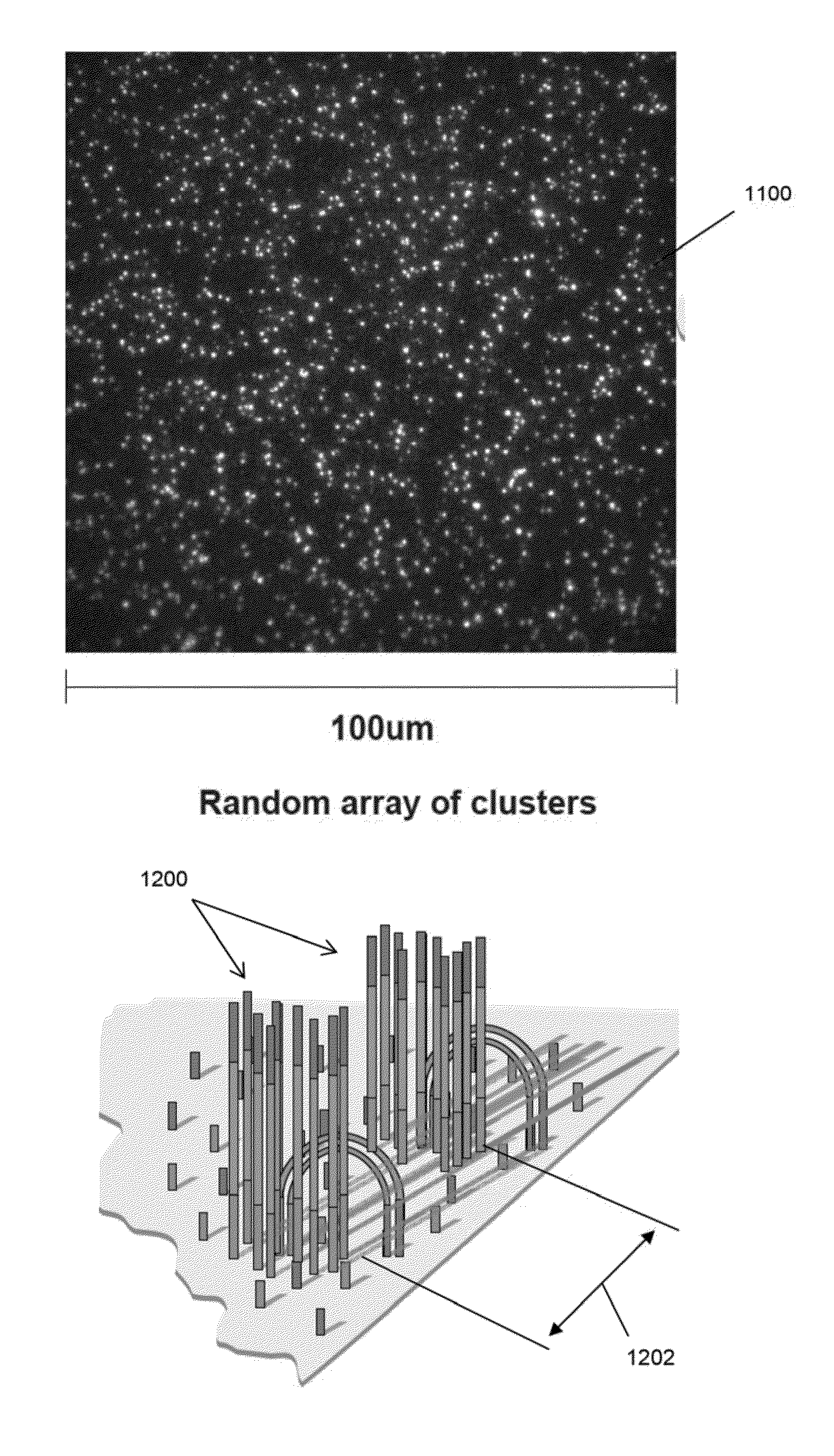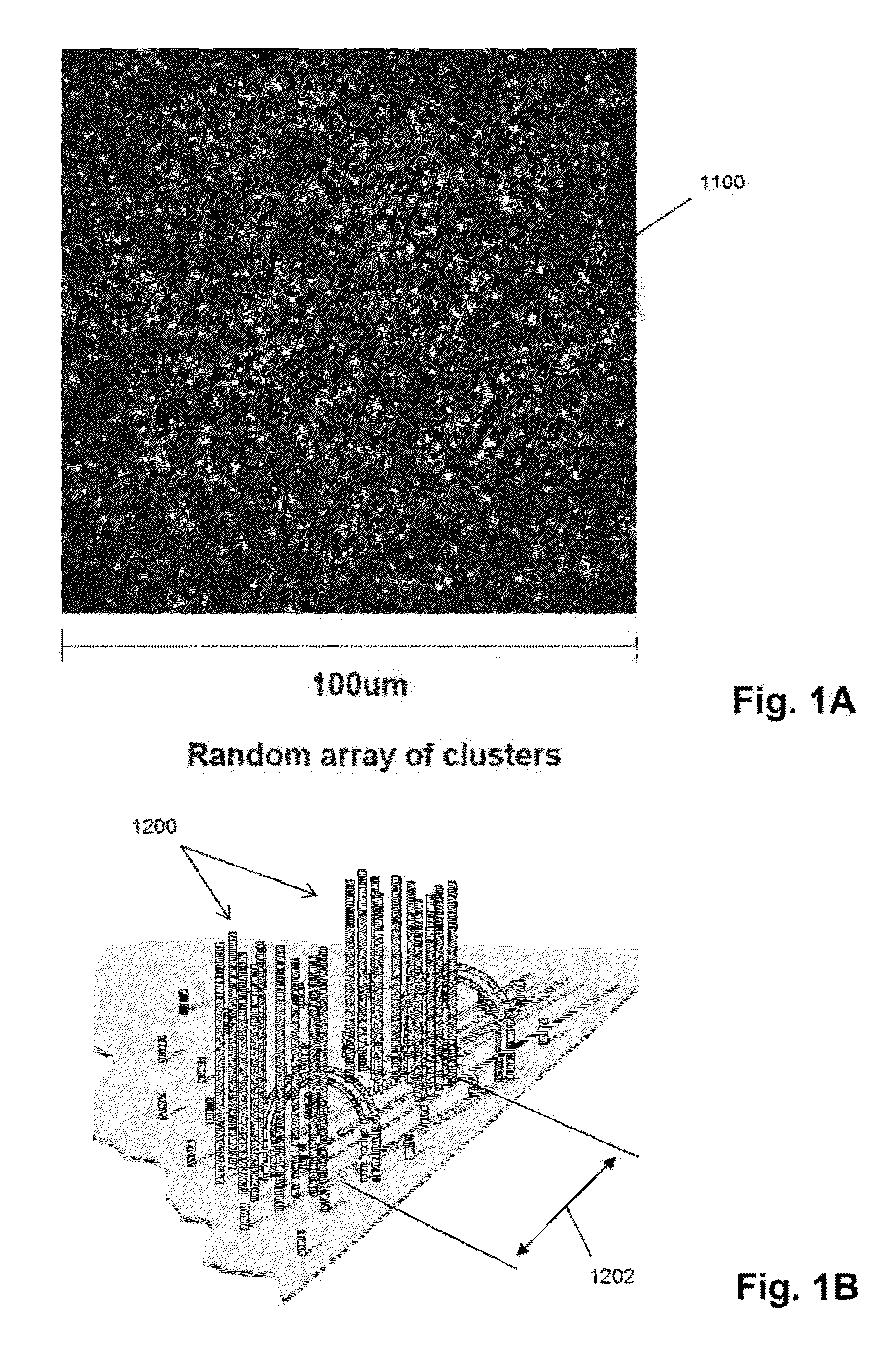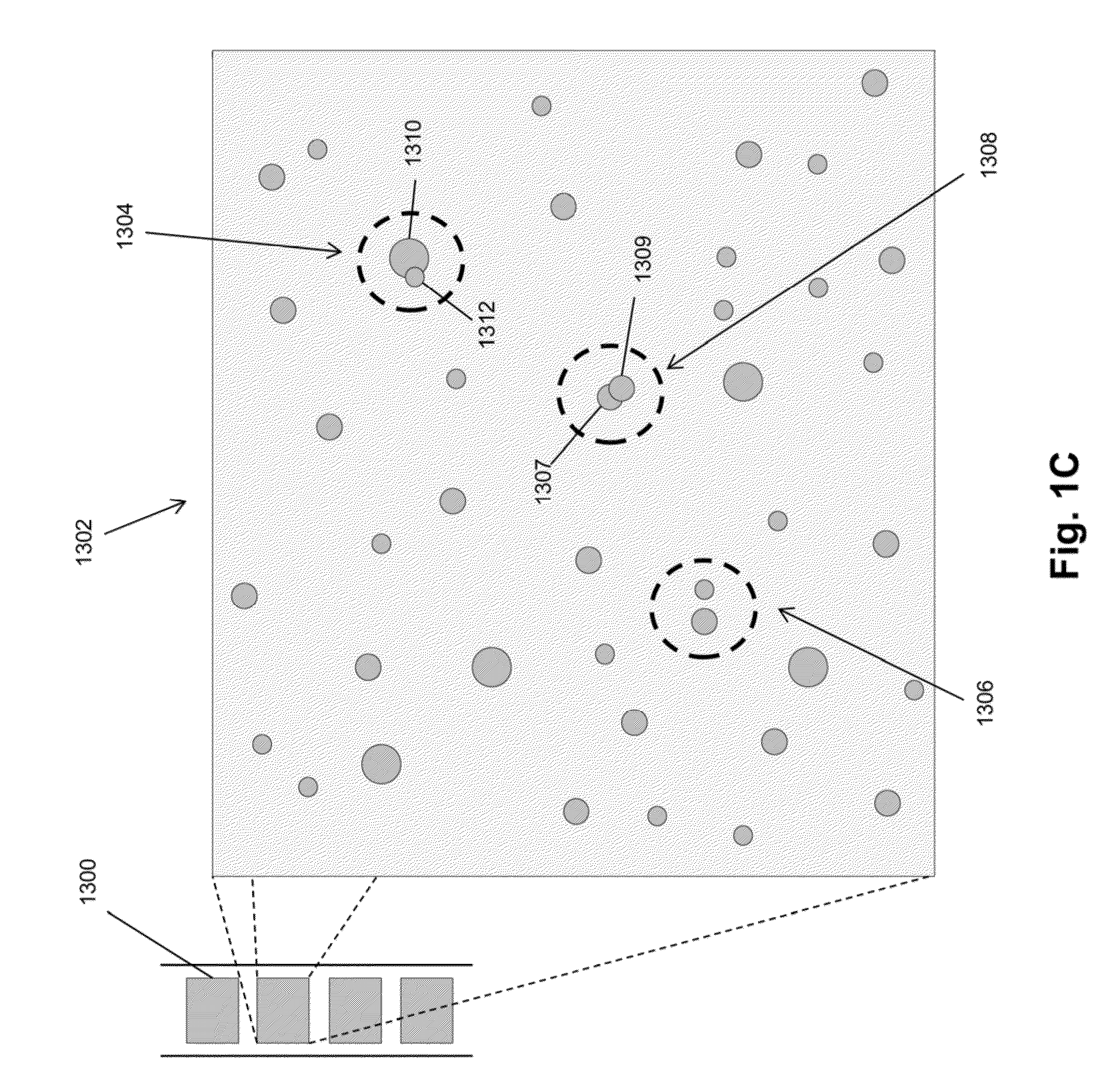Random array sequencing of low-complexity libraries
a low-complexity, random array technology, applied in the direction of library creation, library member identification, biochemistry apparatus and processes, etc., can solve the problem of reducing the yield of sequencing
- Summary
- Abstract
- Description
- Claims
- Application Information
AI Technical Summary
Benefits of technology
Problems solved by technology
Method used
Image
Examples
example
[0062]In this example, a set of primers specific for J segments of IgH templates are redesigned in accordance with the invention to insert a cluster identification portion. The following J segment primers are disclosed by Faham and Willis, U.S. patent publication 2011 / 0207134, which is incorporated herein by reference. The primer sequences are identical, except for the nucleotides indicated by holding and underlining. The sequence “acgagcctcatgcgtaga” on the left (or 5′ end) is the sequencing primer binding site portion for each and the sequences on the right of the space (or 3′ end) are the template binding portions.
SEQ IDJ Segment Primers 1-4NO1. acgagcctcatgcgtaga ctcacctgaggagacggtgacc12. acgagcctcatgcgtaga ctcacctgaggagacagtgacc23. acgagcctcatgcgtaga cttacctgaagagacggtgacc34. acgagcctcatgcgtaga cttacctgaggagacggtgacc4
[0063]For each primer sequence 1-4, three additional primer sequences are generated in accordance with the invention as shown below which may be used in the IgH am...
PUM
| Property | Measurement | Unit |
|---|---|---|
| diameters | aaaaa | aaaaa |
| volume | aaaaa | aaaaa |
| volumes | aaaaa | aaaaa |
Abstract
Description
Claims
Application Information
 Login to View More
Login to View More - R&D
- Intellectual Property
- Life Sciences
- Materials
- Tech Scout
- Unparalleled Data Quality
- Higher Quality Content
- 60% Fewer Hallucinations
Browse by: Latest US Patents, China's latest patents, Technical Efficacy Thesaurus, Application Domain, Technology Topic, Popular Technical Reports.
© 2025 PatSnap. All rights reserved.Legal|Privacy policy|Modern Slavery Act Transparency Statement|Sitemap|About US| Contact US: help@patsnap.com



